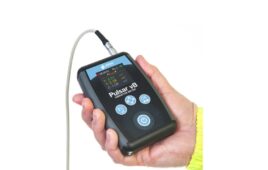At Sensors Expo 2019, Ben Lanail, Director of Business Development at Alta Devices, explains how his company’s thin-film solar voltaic cells can provide power for a variety of devices and applications, including the Internet of Things (IoT).
Made from wide band gap (WBG) gallium arsenide (GaAs), the cells have very good light to electricity conversion efficiency and are very thin, lightweight and flexible. This makes them ideal for use on curved surfaces to harvest light and power devices that need more autonomy. Their current leading market is flying objects, including fixed wing drones, airships and satellites but they are also getting active in Internet of Things (IoT). So, wearables, sensors, beacons or anything that need battery augmentation or battery replacement are also excellent applications. The cells function well in low light and do not need sunlight or direct light, so harvesting indoor light can make an end product more autonomous. Distributed devices with built-in intelligence that communicate with other devices and need power reliably and constantly can take advantage of these solar cells.
Alta Devices offers single junction and dual junction solar cells with either shingled or unshingled configurations. The power density of the cells is 290 W/m2 with the max power voltage of 2.14V. The weight per cell is 0.112 g. As measure of flexibility, the radius of curvature is greater than 5 cm.
In the Sensors Expo examples, the Solar Powered Bluetooth Sensor and the Solar Powered Smart Sensor Demo, a 2 cm x 5 cm cell generates 220 mW.
Filed Under: Sensor Tips





Tell Us What You Think!